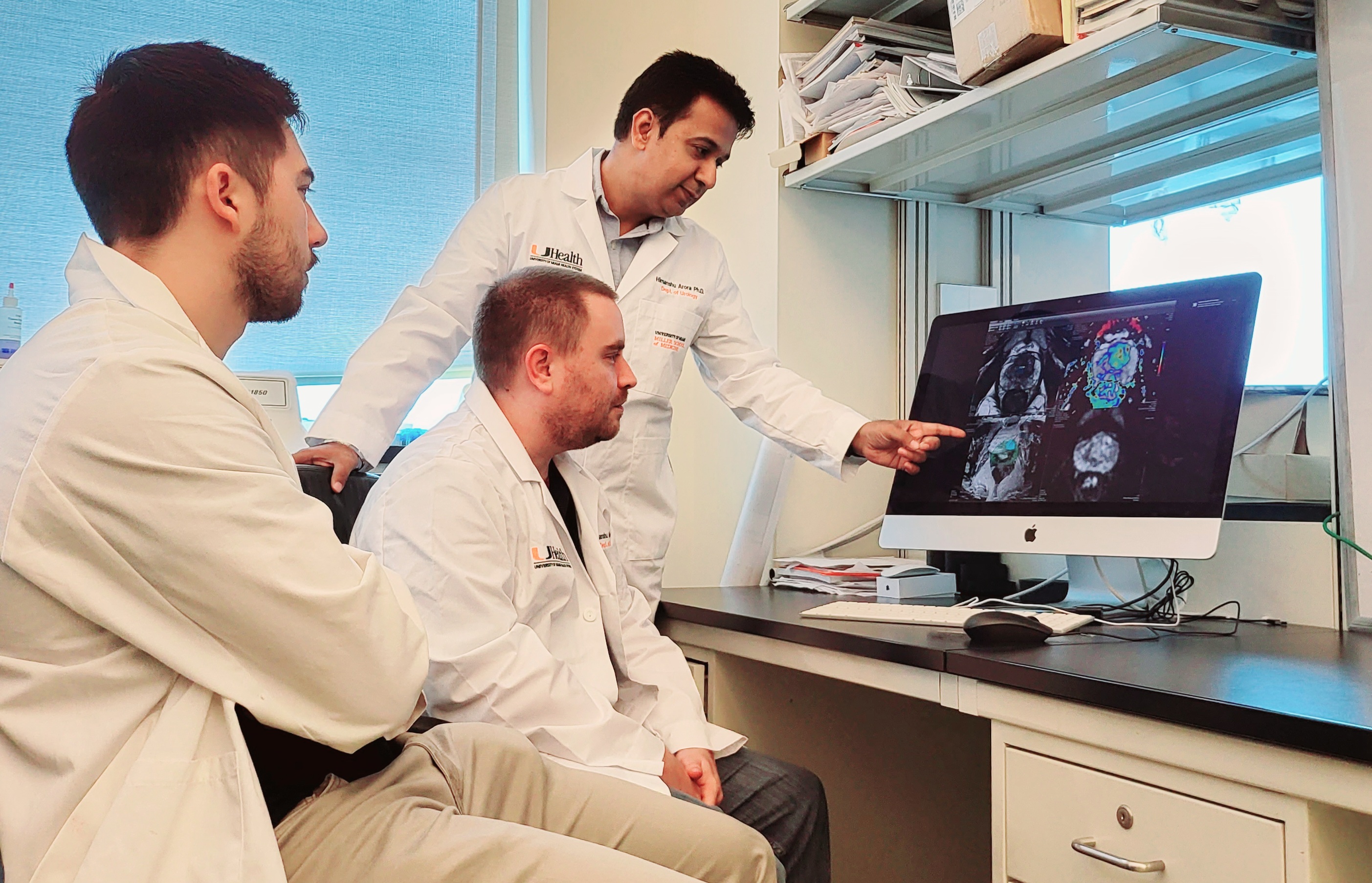The recent integration of open-source data with machine learning models, especially in the medical field, has opened new doors to studying disease progression and/or regression. The use of conventional MRI in prostate cancer research and treatment is effective for prognosis, diagnosis, active surveillance, and reducing the need for biopsy procedures in lower-risk patients.
“Recent advances in machine learning suggest there is promise in developing pipelines that could automate standardized and objective assessments from MRI images while reducing time, human capital, and other resource costs,” according to Himanshu Arora, Ph.D., assistant professor at Sylvester and the Desai Sethi Urology Institute at the Miller School of Medicine.
But there are obstacles to effectively using machine learning in patient care, including the ability to effectively use machine learning approaches for specific cancers, the specificity of training data for a particular medical condition, etc. In this context, the most recent technologies, like generative adversarial networks (GANs), are being looked upon as a potential way to generate high-quality synthetic data that preserve the clinical variability of a condition and be applied to PET, CT, MRI, ultrasound, and X-ray imaging in the brain, abdomen, and chest. However, despite some success, GAN model usage remains minimal when depicting the heterogeneity of a disease such as prostate cancer.
The translational research team is focused on improvising the GAN tools, Dr. Arora said, to allow the output images to be applied and integrated with diagnostic and prognostic tools in prostate cancer. A pioneer in the use of GANs in machine learning for prostate cancer, Dr. Arora authored a study, “Generative Adversarial Networks Can Create High Quality Artificial Prostate Cancer Magnetic Resonance Images,” that was recently published in the Journal of Personalized Medicine as part of a special issue, “The Cutting Edge and Precision Medicine in Prostate Cancer. “
Timely Diagnosis of Prostate Cancer
Making headway in the use of machine learning in prostate cancer is especially important, given that it is the most common cancer among men and second most common cause of cancer-related death for men in the U.S.
“Timely diagnosis and assessment of prognosis are challenges for prostate cancer, and this results in many deaths and increases [risk of disease progression],” Dr. Arora said. “We cannot replace the human eye when it comes to medical decision-making. Still, the improvement in technologies could potentially assist radiation oncologists in making timely decisions.”
GAN provides a long-term impact on evolving the machine learning models by requiring less data and patient follow-ups for effective predictions. This is important for reducing health care costs and pain associated with repeat follow-ups.
The rationale for using GAN is to use machine learning capabilities and generate digital images by learning from previous follow-ups (MRI images and clinical parameters) and understanding and predicting disease progression or regression patterns.
“Technically, the technology developed here is the first start to building more sophisticated models of ‘data augmentation’ where new digital images can be used in further analysis. This is an early phase of our study, but the outcomes are extremely promising,” Dr. Arora said.
High-Quality MRIs and Deep Learning
Dr. Arora and his colleagues conducted the study using prostate MRIs and digital pathology from various sources as training data to create a GAN model. Using deep learning, they trained the model to segment the prostate boundary on MRI and histology slices, which are microscopic structures of the tissues.
Scientists with varying degrees of experience assessed the resulting images compared to conventional MRI images of the prostate. The researchers demonstrated that the prostate cancer MRIs they generated using the model were high quality. Deep learning segmentation helped to remove images with high distortion, suggesting this GAN machine learning prostate cancer model has promising implications for complex prostate cancer patient imaging.
“Our group at Desai Sethi institute and Sylvester is leading this research by successfully developing the customized GAN to generate synthetic images of high enough quality to use in practice,” Dr. Arora said. “These images are being used to train the traditional machine learning models that could perform diagnosis and prognosis of prostate cancer by using in-house data from active surveillance trials and publicly available data from multiple resources.”
Dr. Arora and his team have presented their high-impact research on the use of GAN in prostate cancer imaging at major medical conferences, including the American Society of Human Genetics and American Urological Association annual meetings in 2022.
Dr. Arora’s co-authors on this study include Isaac R. L. Xu; Derek J. Van Booven; Sankalp Goberdhan; Adrian Breto; Joao Porto; Mohammad Alhusseini; Ahmad Algohary; Radka Stoyanova; Sanoj Punnen; and Anton Mahne.



